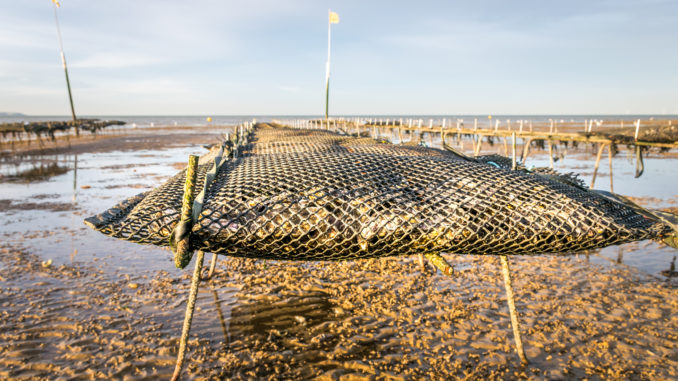
Former NCDMF director fears new legislation is bad news
Will a piece of legislation passed earlier this year by the N.C. General Assembly to promote aquaculture operations in the state’s coastal waters wind up closing down some of those waters to fishermen, hunters or boaters?
The former director of the N.C. Division of Marine Fisheries, Dr. Louis Daniel, worries that it will.
“You still have the right on Core or Pamlico sounds to troll lures or fish or put up a duck blind, but how would you do those things if a company has permission to put dozens, hundreds or thousands of pens or floating sacks of spat oysters in the water?” Daniel said. “How would you safely get your boat to a duck blind in the dark without running over a floatation device, pen or ropes?
“The legislature hasn’t thought about, studied or addressed those questions as far as I can see. It doesn’t seem to want to pursue answers to these questions.”
At issue are SB 410 and SJR 205, passed in 2017 by the legislature, which expanded the purchase of shellfish leases from traditionally the bottom of a body of water to all the water from bottom to surface in the leased area.
“I don’t think (politicians) understood what they were voting for. “(The bills) were about aquaculture, and nobody’s against aquaculture,” said Daniel, who resigned in 2016 as director of NCDMF after nine years on the job and is now a marine science professor at N.C. State and a consultant for the N.C. Wildlife Federation. “The idea of growing oysters by putting spats (baby oysters) on the bottom and letting them grow is ancient, ancient, ancient.”
At issue is the idea that leasing a section of water from the bottom to the surface could result in large, commercial aquaculture companies putting spats in large pens or and suspending them from the surface under floats — common in aquaculture operations.
“Most oyster leases are for 1/8-, ¼-, 3/8- or a ½-acre. The (DMF) issues small oyster garden leases all the time,” said Daniel, who noted that SB 410 would allow leases of up to 1,500 acres, affordable only to large aquaculture businesses like, coincidentally, Cooke Aquaculture of Canada, which previously announced it was moving some of its operations to North Carolina.
Daniel said a state law that gives the public the right to access and navigate any body of water that can “float a log” is still on the books, but it may run head-long into the legislation that allows sprawling bottom-to-surface aquaculture leases for the money they generate for the state.
At the same time the legislature was making it easier to grant huge, bottom-to-surface aquaculture leases, a $100,000 grant it promised to a conservation group for an oyster-related water-quality project hasn’t come through.
Early in 2017, the legislature voted to send the N.C. Wildlife Habitat Foundation a $100,000 check, through the N.C. Division of Marine Fisheries, to help fund a proposed $1 million oyster conservation project in the New River south of Jacksonville through that city’s storm-water section, managed by Pat Donovan-Potts.
“We had to be vetted by the legislature and fill out all kinds of forms,” said Eddie Bridges of Greensboro, NCWHF’s executive director.
Bridges said NCDMF received the check and was ordered to pass it along to NCWHF, but it has been tied up in red tape.
“Before we sent that money to Pat Donovan-Potts, we went through vetting that made more delays,” he said. “She helped put a habitat reef for finfish and shellfish in the New River several years ago. One oyster filters from 30 to 60 gallons of water per day, and Jacksonville had concerns about improving water quality in the river.”
Donovan-Potts proposed “oyster highway” would reach 20 miles from Southwest Creek to Stone Bay in the river, and put a 20-mile section off limits to for-profit oyster leases — the kind the legislature’s actions have promoted.
“No oysters could be harvested from our project,” said Bridges, who said he has commitments of around $200,000 for the oyster highway project, and interested parties waiting to see if the project is approved.




Be the first to comment